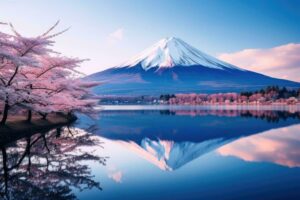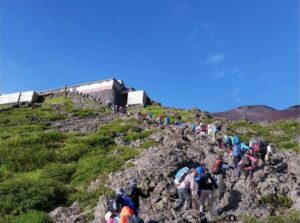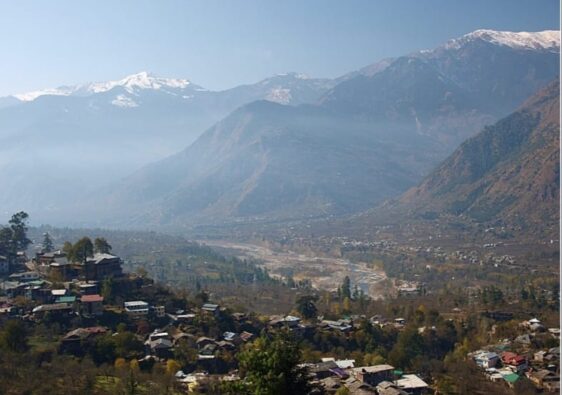When you think of Japan, what’s the first image that pops into your mind? For many, it’s the perfectly symmetrical snow-capped peak of Mount Fuji. Standing tall at 3,776 meters (12,389 feet), Mount Fuji is not only the highest mountain in Japan but also a cultural and spiritual icon that has inspired art, poetry, and wanderlust for centuries. I recently had the chance to visit this majestic mountain, and it was an experience I’ll never forget.

Mount Fuji A Journey to Japan’s Iconic Peak is located about 100 kilometers southwest of Tokyo, making it an easy day trip or weekend getaway from the city. I took the train from Tokyo to Kawaguchiko Station, one of the most popular access points for travelers. The journey took about two hours, with beautiful countryside views along the way. There are also buses available if you’re on a tighter budget, and both options are quite comfortable.
From Kawaguchiko, I hopped on a local bus that took me closer to the mountain’s 5th Station, a popular starting point for hikes and sightseeing. Even if you’re not planning to climb, visiting the 5th Station offers stunning views and a chance to soak in the mountain’s atmosphere.

As we approached Mount Fuji, I felt a mix of excitement and awe. The mountain’s presence is truly commanding—it seems to rise out of nowhere, towering above the surrounding landscape. Despite seeing countless photos and paintings of it, nothing compares to seeing it in real life. The air was crisp, the sky a clear blue, and the peak still dusted with snow, even in the late spring.
There’s a peaceful energy around Fuji-san (as the locals affectionately call it). Whether you’re a hiker, a photographer, or just someone who enjoys nature, Mount Fuji offers something special.
Hiking Mount Fuji
Climbing Mount Fuji is a bucket-list goal for many adventurers, but it’s not something to be taken lightly. The official climbing season is from early July to early September, when the trails are free of snow and the mountain huts are open. I visited just before the official season, so while I didn’t climb to the summit, I explored some lower trails and scenic areas.

If you’re thinking of climbing, there are four main trails: Yoshida, Subashiri, Gotemba, and Fujinomiya. Each offers a different experience in terms of scenery, difficulty, and duration. Most climbers aim to reach the summit before sunrise to witness the breathtaking “Goraiko” – the first light of dawn breaking over the clouds. It’s a magical sight, and many say it’s worth the effort and lack of sleep.
Even if you’re not up for a full climb, there are many hiking trails and nature walks in the area that offer incredible views of the mountain. I spent a few hours wandering through peaceful forests, stopping at shrines, and enjoying the silence of nature.
Exploring the Fuji Five Lakes
One of the best parts of visiting Mount Fuji is the surrounding area, especially the Fuji Five Lakes region. These lakes—Kawaguchiko, Saiko, Yamanakako, Shojiko, and Motosuko—each offer a unique perspective of the mountain. I stayed near Lake Kawaguchiko, which is arguably the most popular and accessible.

Here, you can rent a bicycle and ride around the lake, hop on a sightseeing boat, or simply relax at a lakeside café with Fuji in the background. I spent an afternoon just watching the reflection of the mountain in the calm water, which felt like something out of a dream.
Cultural Highlights
Mount Fuji is more than just a natural wonder—it’s also deeply spiritual. The mountain is considered sacred in Shinto and Buddhist traditions, and there are many shrines and temples in the area dedicated to the gods of the mountain.
I visited the Fujisan Hongu Sengen Taisha Shrine in Fujinomiya, which is the head shrine of over 1,300 Sengen shrines across Japan. The atmosphere there was peaceful and serene, with ancient cedar trees, flowing water, and traditional architecture. Many climbers come here to pray for a safe journey before ascending Fuji.
There’s also the Chureito Pagoda, located in the Arakurayama Sengen Park. It’s one of the most photographed spots in Japan, especially during cherry blossom season. From the pagoda, you get a picture-perfect view of Mount Fuji framed by blossoms in the spring or fiery red leaves in the fall.
Where to Stay
Accommodation options around Mount Fuji range from budget-friendly hostels to luxurious ryokans (traditional Japanese inns). I stayed in a cozy guesthouse in Kawaguchiko with tatami mats, futon bedding, and an onsen bath. Soaking in a hot spring while gazing at Mount Fuji was one of the highlights of my trip.
If you’re visiting during peak season (summer or cherry blossom season), it’s a good idea to book your accommodation in advance, as places fill up quickly.
What to Eat
No trip is complete without trying the local food, and the Mount Fuji area doesn’t disappoint. I enjoyed a bowl of hōtō, a hearty noodle soup made with thick wheat noodles, vegetables, and miso-based broth—perfect after a long walk. You’ll also find plenty of fresh trout, mountain vegetables, and even ice cream flavored with local produce like lavender and wasabi.
